Remarketing and Retargeting for ECommerce Websites
If you have an eCommerce website, then you’re probably familiar with retargeting and remarketing. The thing is, it’s common to be familiar with the...
I know what I am looking for, and would like to chat.
A team of data-driven marketers obsessed with generating revenue for our clients.
Because the proof is in the pudding.
At Campaign Creators we live by three principles: Autonomy, Mastery, Purpose.
8 min read
 Campaign Creators
:
09/23/20
Campaign Creators
:
09/23/20

For every eCommerce business, there are important eCommerce marketing KPIs to track: number of orders, revenue, profits, etc. However, there’s one metric you may not be tracking that has the power to impact your bottom line and improve your success forecasts for better decision-making.
That metric is customer lifetime value, and today we’re looking at how it’s calculated, how to use it and how to improve it.
Once you master these strategies and truly get to grips with your customer lifetime value, you’ll be well on your way to a more profitable eCommerce business! Let’s dive in…
Customer lifetime value (sometimes abbreviated as CLV or CLTV) refers to the total amount of revenue that will be generated by the average customer throughout their relationship with your business. It takes into account variables like purchase frequency, average order value, and average number of orders. Naturally then, CLTV marketing is used to increase the lifetime value of each customer.
The customer lifetime value formula involves some of the important metrics you’re probably already tracking; your eCommerce platform may even display these to you by default. But just in case, let’s take a look at what you’ll need for this LTV calculation:
To calculate customer lifetime value, first we need to calculate customer value (CV). This is basically the same thing, but without the longevity. To do that, you simply take your average order value times your purchase frequency.
AOV x PF = CV
So now that you have your customer value, we’re going to multiply that by your estimated customer lifespan to find your customer lifetime value.
CV x ECL = CLTV
Let’s pretend you own a toy shop for young kids. If your average customer buys $100 worth of toys per order, that’s your AOV. They come to your site on average 3 times per year, so your PF is 3 and your period is one year. So to calculate your CV for one year, we look at this:
$100 x 3 = $300
Now, your customers are VERY loyal, and they stick with you at the same rate for 12 years on average. So your ECL is 12, and your CV is $300. To get your CLTV, we just have to multiply those together:
$300 x 12 = $3,600
Your customer lifetime value is $3,600, which is a very important number to know as you assess the success of your various initiatives.
If monthly or yearly sales are your top KPIs, it may surprise you to learn that customer lifetime value should also be one of the most important metrics to track your eCommerce marketing success. It should be just as important to your view of success as revenue, if not more. Here’s why…
Sales and revenue are great metrics for evaluating the here and now, but customer lifetime value is the best way to forecast your future success. When you know how much you'll earn from your average customer during a specific period, every lead and customer acquired becomes a viable piece of forecasting data. This will helped you plan ahead, invest wisely, and continue to grow your business.
When you’re keeping a close eye on customer lifetime value, you can quickly identify trends in customer satisfaction. Having a metric gives you a specific benchmark of where your company stands in meeting your customers' needs. If you find that your customer lifetime value is lower than you’d expect, you can take a deeper dive into the metrics to identify and fix ths issue.
More satisfied customers will spend more money with you, they’ll purchase more frequently, and the relationship will continue for much longer. Essentially, monitoring and improving your customer lifetime value will help you focus on increasing revenue from existing customers.
As you know, finding new customers comes with a cost. One of the biggest challenges eCommerce brands face is lowering the cost to acquire new customers so that they can drive profits to grow their business. This is where improving your customer lifetime value can help achieve this goal. By focusing on strategies that will extend the lifetime of your existing customers, you can continue to increase sales without spending more on acquiring new customers.
Using the RFM model, you can segment your customers according to how recently they purchased your product, how frequently they purchase your product, and the monetary value/how much they spent. By segmenting these groups, you can then determine which group is the most valuable segment and focus your time on those customers. This will help you improve customer lifetime value and lower customer acquisition costs by focusing your time and money on customers that will give you the most bang for your buck.
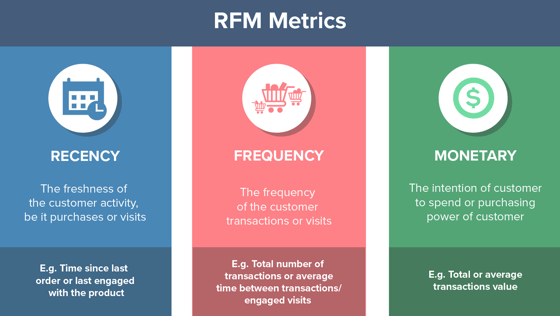
Source: CleverTap
When you’re aware of your customer lifetime value, you’re able to better address profitability within your business. For example, someone’s first purchase may not be particularly profitable, especially when marketing budget is accounted for, but if you know they’ll come back again, you can start to better assess profitability for that customer. Plus, remember those high-RFM-scoring customers we just identified? Marketing to them (and generating more of them) will have big impacts on your profitability, too.
Your customer lifetime value is the ultimate KPI for customer retention campaigns. If your retention strategies are working, your CLTV will increase. No questions about it. So if you’re going to focus on customer retention strategies (which you should!) then make sure you’re tracking customer lifetime value to provide real insights into your success.
Attracting new customers to your business is very important, but increasing the lifetime value of those customers is what will really move the needle for your eCommerce business. Here are 7 ways you can improve your CLTV.
As discussed previously, customer satisfaction and customer lifetime value are highly linked. To improve your your CLV, invest time and effort into building an effective customer support program. You don't need a huge team, but you should offer omni-channel customer support. This can include:
Just remember, every support channel you offer must be of high-quality. One of the worst things you could do is create multiple support channels and leave them unmanned. Instead, determine your ideal customer's favorite means of communication and start with those few channels. If you service seniors, they may be more comfortable picking up a phone for customer support. If you service Gen Z audiences, social media may be ideal.
Automating your customer support with softwares like HubSpot and Drift are great options to providing quality support at a manageable scale. No matter your company's size or budget, there's plenty of options to provide outstanding customer support.
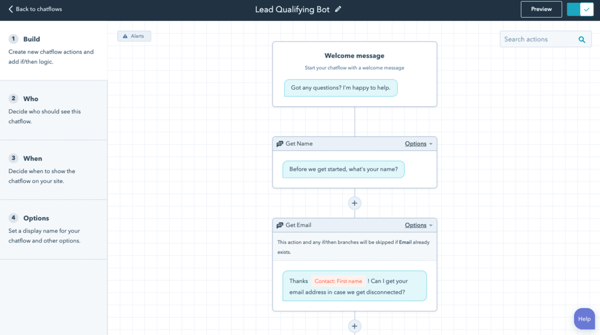
Source: HubSpot
Chances are your marketing department has spent countless hours fine-tuning your buyer personas and understanding them inside and out. The good news is, you can harness this asset beyond customer acquisition.
By creating targeted content that speaks to each of your customers' paint points, the more value you'll provide for each of your customers. Especially for the B2C/eCommerce space, you'll increase the likelihood to re-engage those one-time buyers and create repeat, loyal customers. The more repurchases you can generate, the more your customer lifetime value will increase.
If you’re trying to improve your customer satisfaction in order to raise your customer lifetime value, the best way to figure out what your customers want is by asking them! Things like NPS or CSAT surveys can help you generate valuable feedback. You can also deploy social listening to determine what people are saying about you unprompted.
The most important part of gathering customer feedback, however, is putting it into action. If you’re looking to improve customer satisfaction and you ask them how you can do so, you’d better be prepared to follow through. Using feedback to provide a better customer experience can help you improve satisfaction, and ultimately, customer lifetime value.
Anniversary emails are sent out on important dates like a birthday, the anniversary of a purchase, or a subscription, often with the “gift” of an exclusive discount. They’re incredibly powerful marketing tools because of how they tap into consumer psychology to generate a purchase. Here’s how:
Anniversary emails are also incredibly efficient to create, as you usually only need to implement them once and then refresh them once per year. This means that not only are they an effective tool for improving customer lifetime value, but also a profitable one.

Source: Really Good Emails
One of the best ways to improve CLTV is to implement remarketing strategies. Remember, remarketing is different from retargeting. Remarketing focuses on re-engaging existing customers, while retargeting is used to reach those who interacted with your site, but have never become a customer. Unlike new visitors, where you rely on paid retargeting, you’re able to send automated remarketing emails to existing customers.
Abandoned cart emails and re-engagement emails are great remarketing strategies you can try. These will help you recover orders from customers you might otherwise have lost, improving their lifetime value.
This is where integration becomes incredibly important. When your eCommerce site and your CRM are well integrated, you can have purchase data automatically stored against the contact record, allowing for automated nurture campaigns to cross-sell and upsell to your existing customers.
Cross-sell campaigns involve suggesting other complimentary products a customer just purchased. For example, you can cross-sell a customer essential oils if they just purchased a diffuser. On the other hand, upselling involves encouraging a customer to purchase a more premium and expensive model of the same product. For example, when Apple encourages you to buy the iPhone 8 after purchasing an iPhone 7. Ultimately, upsell and cross-sell email campaigns are easy and highly-effective ways to increase your customer lifetime value.
If you're a HubSpot and Shopify user, we have a great solution for you. Check out our Post-Purchase Cross-Sell Campaign for HubSpot-Shopify. This all-in-one package can be purchased and launched immediately so that you can start increasing your customer lifetime value in no time. Watch the video below to learn more about this product...
Customer loyalty programs come in all shapes and sizes, and chances are there’s a model that will work for you. One of the most common implementations of this is the points-based loyalty program, where customers earn points based on the number or value of their orders.
Especially if your brand has plenty of industry competition, loyalty programs ensure your customers continue buying from you, instead of your competition. For example, plenty of coffee shops run loyalty programs where customers will receive a stamp every time they purchase a drink. Once a customer has a certain number of stamps, they're often rewarded with a free drink. This is an easy and fun way to ensure your customers continue to purchase from you, ultimately increasing customer lifetime value.
Customer lifetime value is an incredibly useful metric to track, as it indicates customer satisfaction and is a good way to predict future success. Now that you understand the different components and metrics that impact your customer lifetime value, you can depict opportunities for improvement and growth. As you can see, there's plenty of strategies to improve your customer lifetime value, but now it's time to take action.
Not sure where to start? Download our free ECommerce Lead Nurturing Guide to learn how to build lead nurturing campaigns that will create repeat, loyal customers and ultimately improve your customer lifetime value.
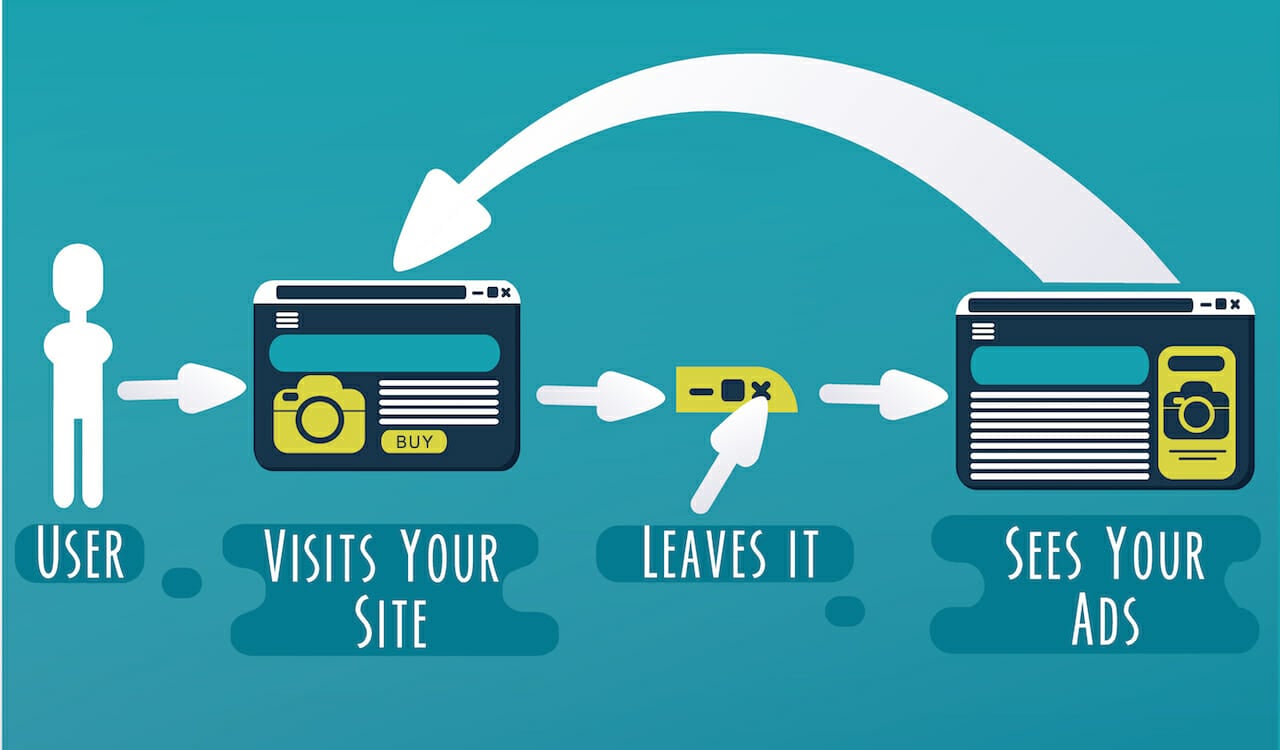
If you have an eCommerce website, then you’re probably familiar with retargeting and remarketing. The thing is, it’s common to be familiar with the...
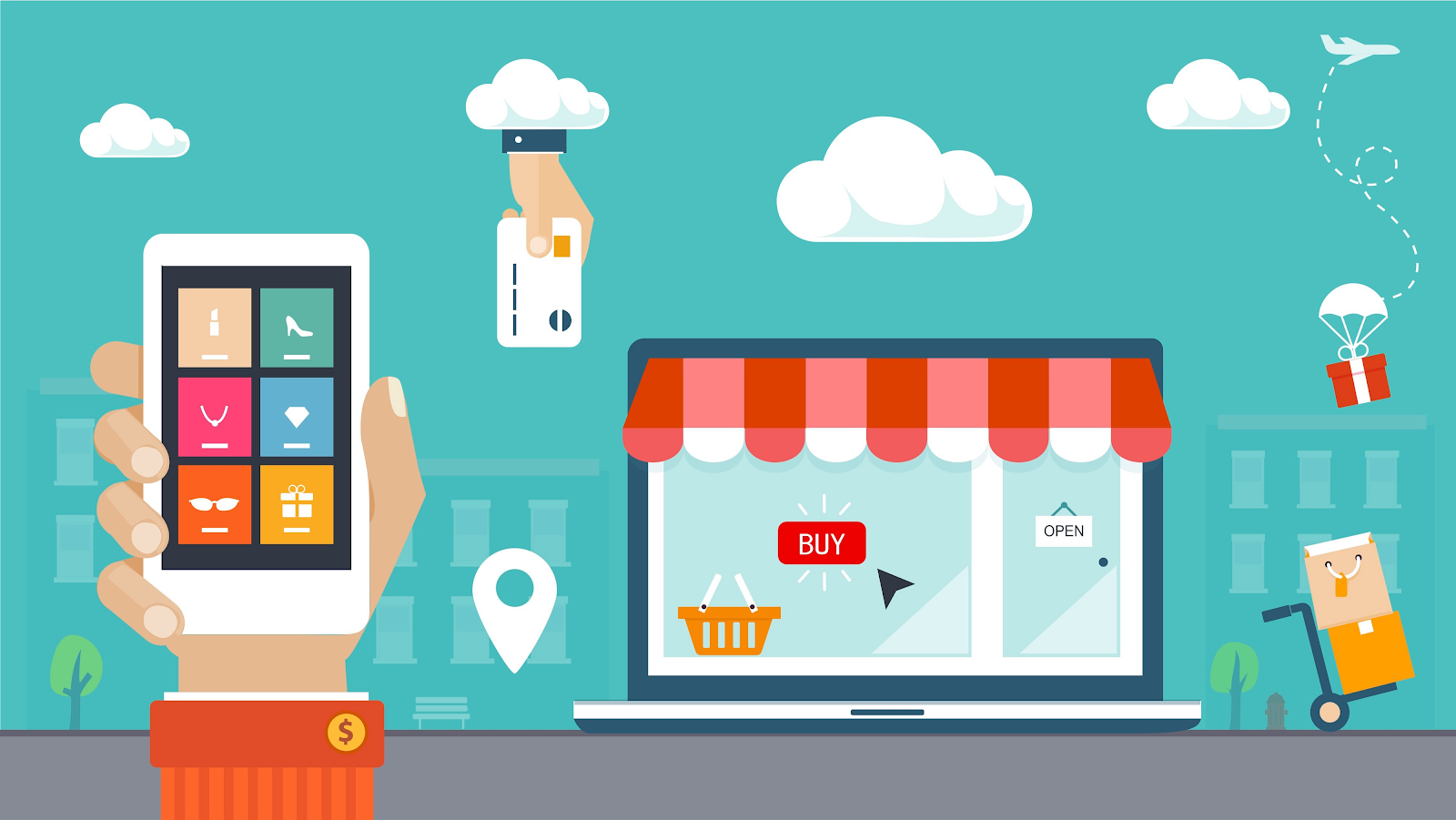
Third party sites for eCommerce businesses come in all shapes and sizes; all with different benefits, functions and features. Between suppliers,...
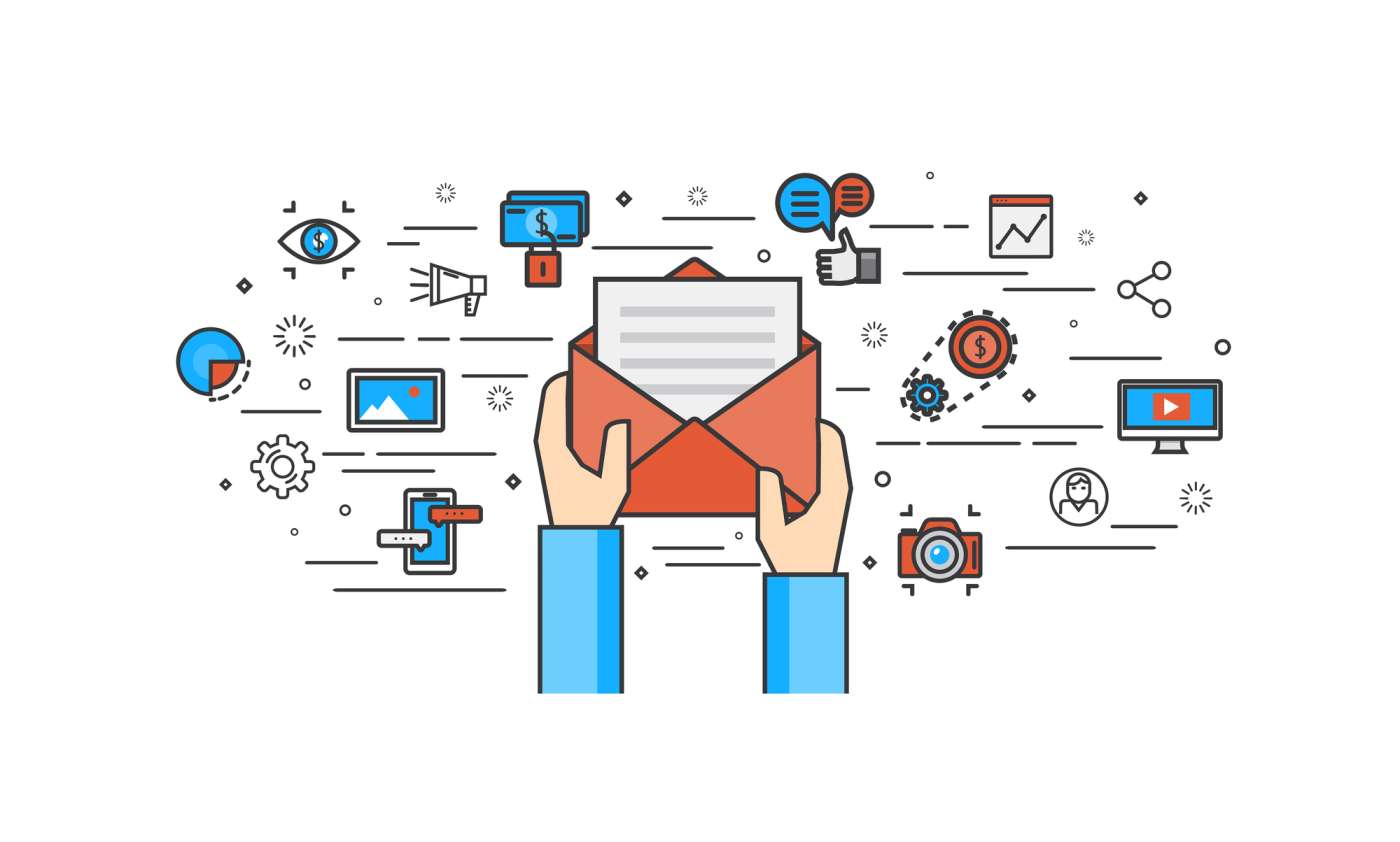
If you’re looking to optimize your eCommerce marketing, you should start with your eCommerce email marketing automation strategy.